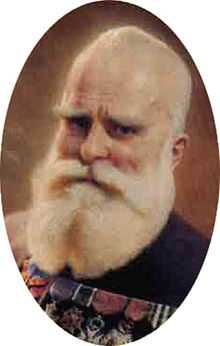Carl Haag


Carl Haag (20 April 1820 – 24 January 1915) was a German-born painter who became a naturalized British citizen, and court painter to the duke of Saxe-Coburg and Gotha.
He was born in Erlangen (Bavaria), and was trained in the Academy of Fine Arts Nuremberg and Munich. Haag practised first as an illustrator and as a painter, in oil, of portraits and architectural subjects; but after he settled in England, in 1847, he devoted himself to water colors, and was elected associate of the Royal Society of Painters in Water Colours in 1850 and member in 1853. He traveled much, especially in the East, and made a considerable reputation by his firmly drawn and carefully elaborated paintings of Eastern subjects. Some of his depictions of the Middle East are at the Israel Museum's collection. Towards the end of his professional career Carl Haag quit England and returned to Germany where he died in Oberwesel.
See A History of the Old Water-Colour Society, now the Royal Society of Painters in Water Colours, by John Lewis Roget (2 vols, London, 1891).
Works (selection)
- Evening in Balmoral
- The Sudden Shock in the Desert
- The Danger in the Desert
- The Ruins of Baalbek
- Panorama of Palmyra
- Beduin Devotion
- Ouposts in Montenegro
- Reading the Koran
Sources
![]() This article incorporates text from a publication now in the public domain: Chisholm, Hugh, ed. (1911). "Haag, Carl". Encyclopædia Britannica (11th ed.). Cambridge University Press
This article incorporates text from a publication now in the public domain: Chisholm, Hugh, ed. (1911). "Haag, Carl". Encyclopædia Britannica (11th ed.). Cambridge University Press
External links
| Wikimedia Commons has media related to Carl Haag. |
- Carl Haag in the German National Library catalogue
|